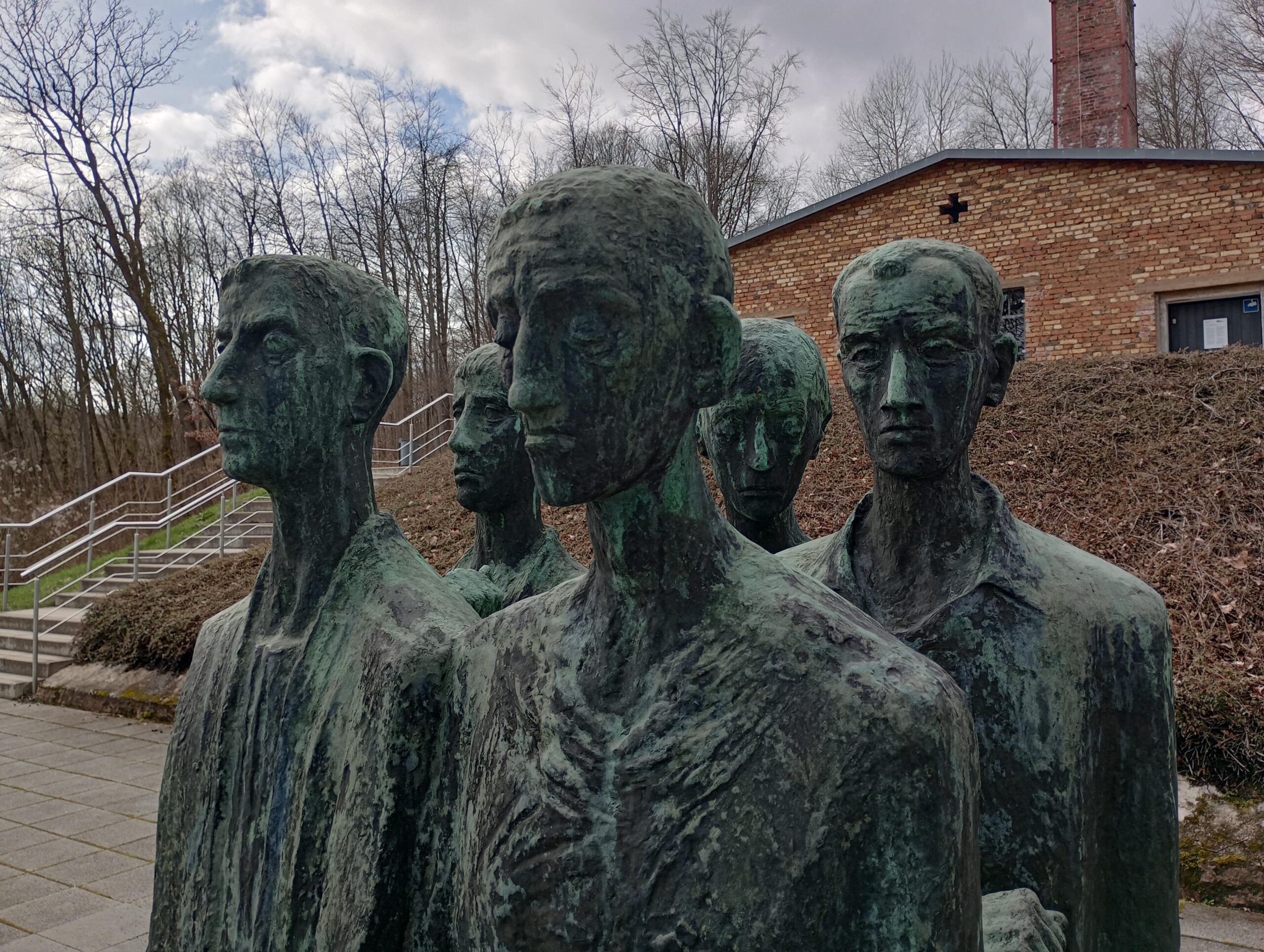Monday 25th March 2024
On the outskirts of Nordhausen there is a small memorial at the side of the road, in an industrial estate. It reads, ‘Zum Gedenken an die 1278 Opfer vom KZ-Dora’. (To the 1,278 victims of the Dora concentration camp.)
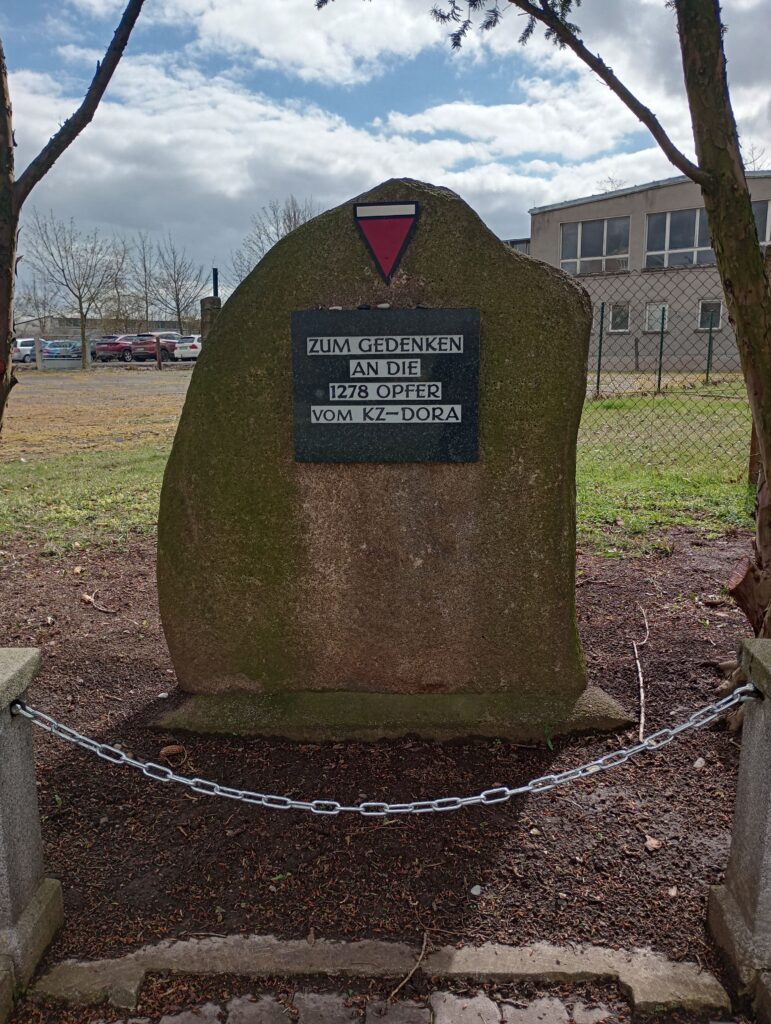
On this site, during the war, stood the Boelcke Kaserne (Boelcke Barracks) – one of the numerous subcamps of the Mittelbau-Dora concentration camp. If a prisoner at the main camp became too ill or feeble to work they were sent here, and effectively left to die, in their hundreds. When the RAF bombed Nordhausen on the 3rd and 4th April 1945 over one thousand of the prisoners at Boelcke Kaserne were killed. A week later the Americans entered Nordhausen. If you have the stomach for it, and it is particularly graphic, there is newsreel of the liberation on https://en.wikipedia.org/…/Boelcke-Kaserne….
In the middle of Nordhausen there is a memorial to all those killed in the April 1945 bombing. Approximately 8,800 people.
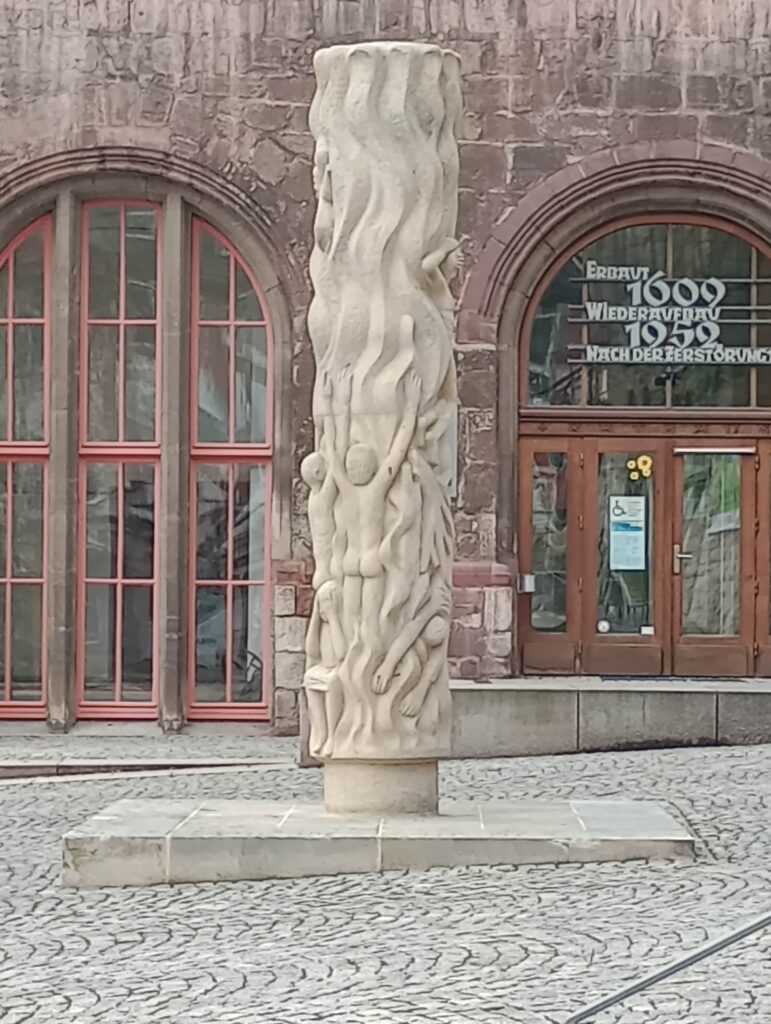
As you drive beyond the north of Nordhausen the ground gently rises, and the signs to the Mittelbau-Dora memorial bring you to a railway carriage at the opening of the driveway to the camp. The means of transport by which so many arrived eighty or so years ago.
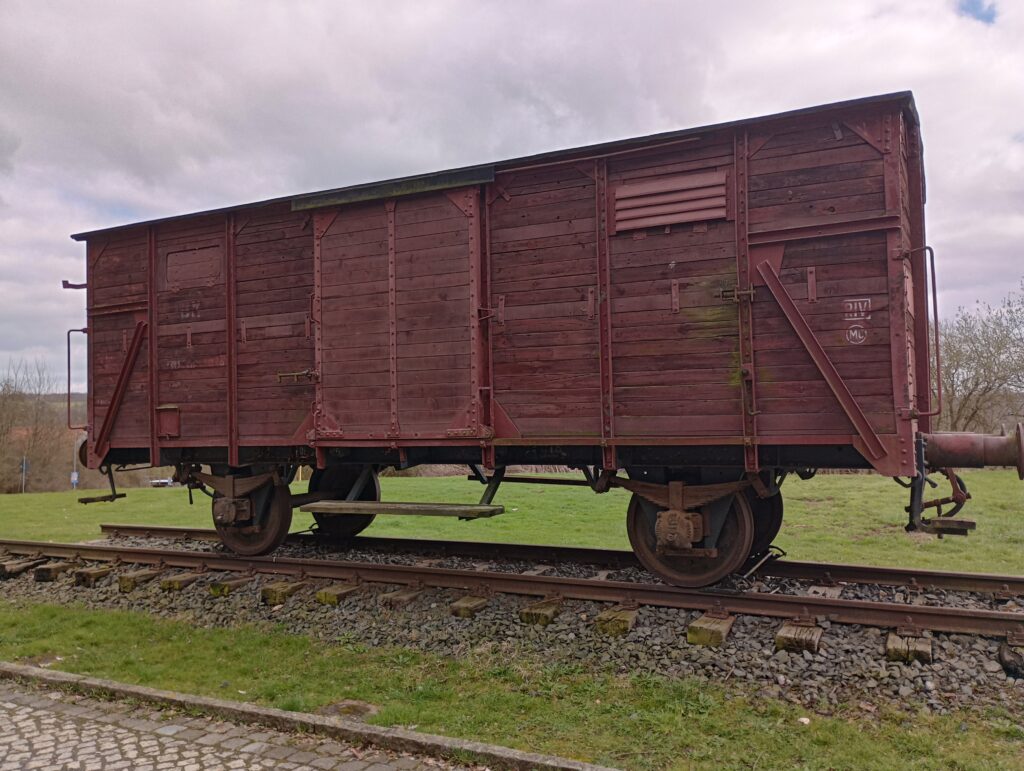
As I drove on I struggled with this thought, and the words that came to my mind, nevertheless I had them. It is a beautiful location, but it is far – so far – from being a beautiful place.
Following the RAF bombing of Peenemünde in August 1943, which seriously impacted V2 rocket development, production was moved to the underground tunnels in Kohnstein Mountain. Camp inmates arrived, and ‘Dora labour camp’ became a sub camp of Buchenwald. Initially inmates had to live and work in the tunnels on construction. Conditions were horrific. Thousands died. Eventually outside barracks were built. Nevertheless the barbarity and inhumanity continued. I won’t give a full account of the camp here. There is an excellent website, which gives all the details of the history and the site now – https://www.dora.de/en/.
There is a guided circular walk around the camp. Starting at the museum and moving on to the camp gates, beyond which is the muster ground – the location of public hangings, and brutally long roll calls.
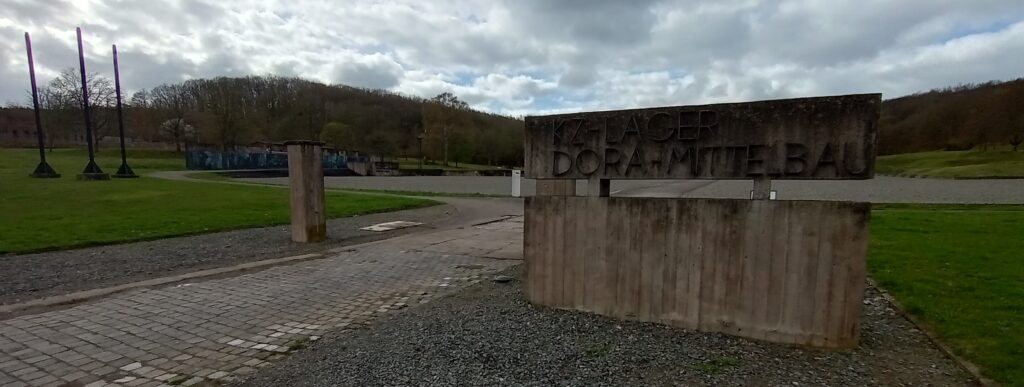
Then to the prison cells, the execution site, and various buildings and barrack locations. Signs give detailed accounts of what went on in the buildings. The information about the inhumanity is relentless. Behind the crematorium, where the ovens worked all day long, is the slope where the SS dumped the ashes.
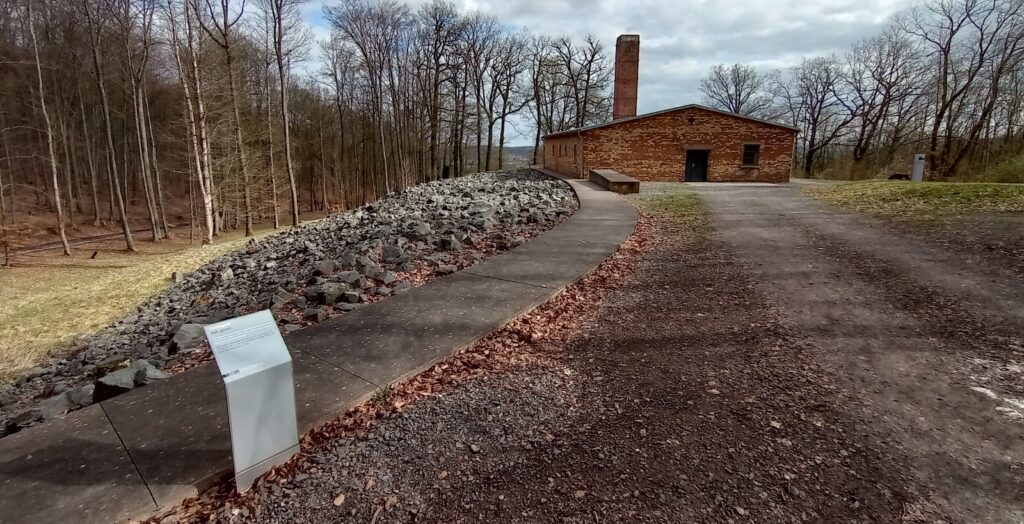
Eventually the crematorium could not cope with the numbers and corpses were burnt in the open. In front of the crematorium is a sculpture of five inmates. Their faces depict the absence of any hope.
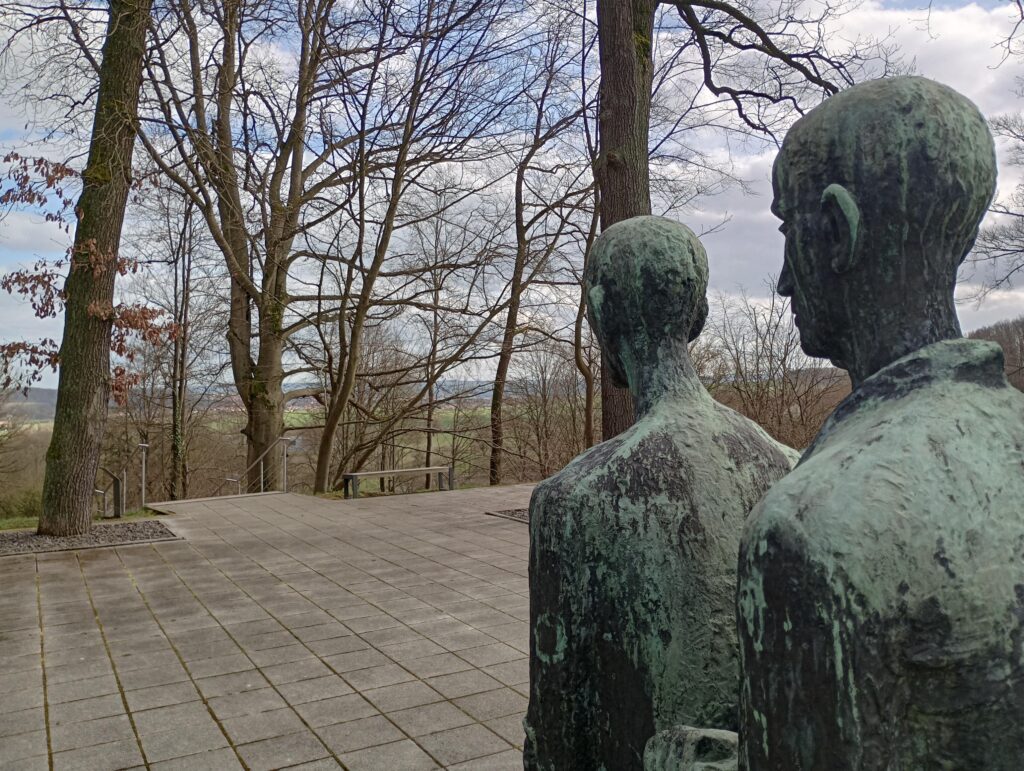
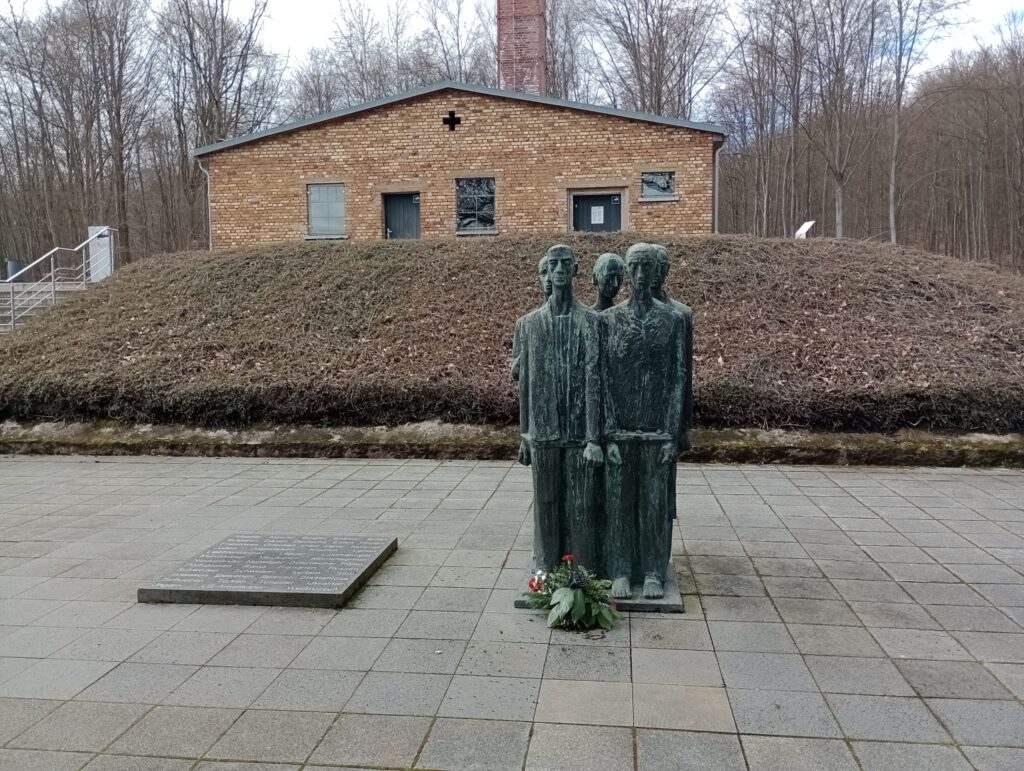
The entrance to the two tunnels, where the work on the rockets took place, were dynamited after the war by the Russians. One has been re-opened. You can normally go inside but they are currently shut for construction work.
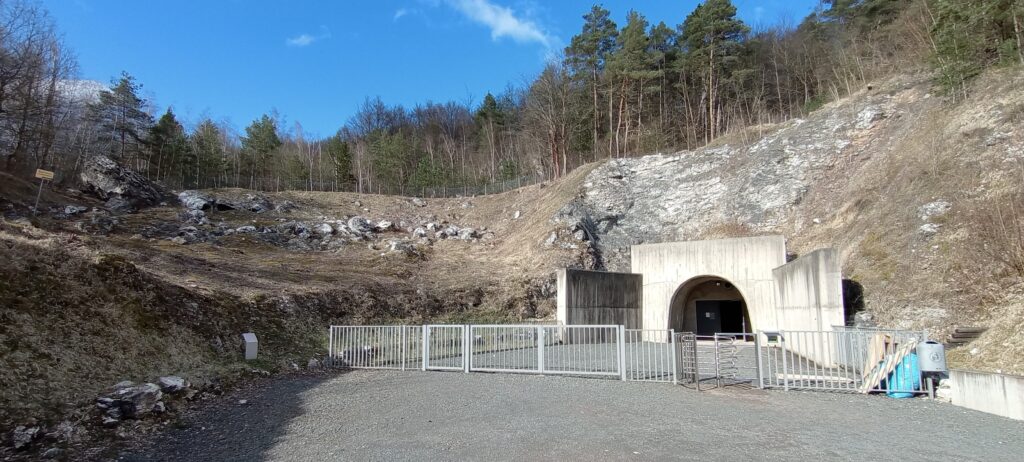
Finally, I walk to the railway sidings where inmates arrived. In the early days of the camp, harassed by the SS and dogs, the prisoners would be led straight to the tunnels.

This was a difficult visit. This may have been a difficult read. The contrast between the mood at Stalag Luft III yesterday, and the atmosphere here is marked. I draw on Holocaust survivor Viktor Frankl’s maxim that despair comes from suffering without meaning. At Mittelbau-Dora the suffering had no meaning. From August 1943 to April 1945 approximately 60,000 individuals, from all over Europe were sent to Mittelbau-Dora. One third would not survive.
Does this level of criminality and barbarity justify the devastating bombing of Nordhausen?
Next – the Eder Dam and Leopoldsburg War Cemetery.
